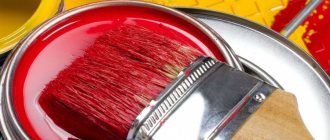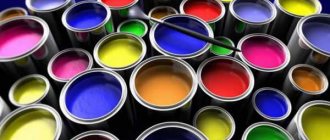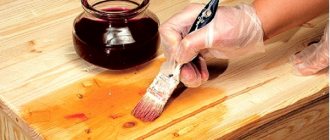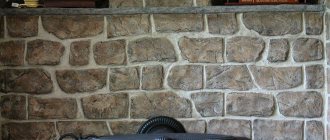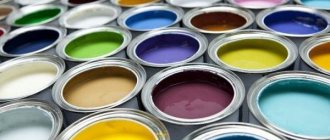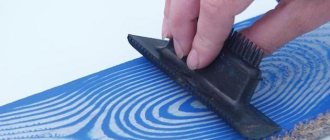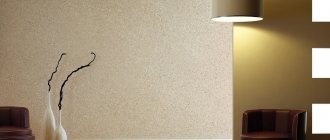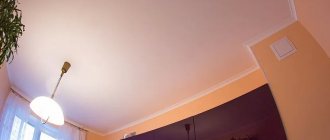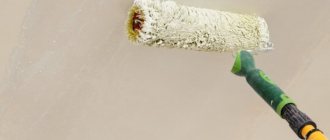Painting tools
Glass painting is done using paints and varnishes that adhere well to the smooth and even surface of the product. If you choose the wrong composition, this can lead to further peeling or fading of the color. To paint glass at home, you can use ready-made paints or make them yourself.
Ready-made compositions are as follows:
- Acrylic.
- Polyurethane.
- Oily.
- Silicate.
The acrylic look adheres securely to the glass and looks like a matte film once all the work is completed. The advantages are that this glass paint does not change color and does not fade when exposed to direct sunlight. After drying, the glass becomes opaque.
The polyurethane type is very flexible. The main advantage is its fast hardening time. These compositions can be transformed into a different color using tinting, according to the proposed color palette. Modern manufacturers offer a huge number of shades. Glass painted with polyurethane compounds will be transparent.
Oil paints are intended only for the matte surface of the original product. A prerequisite is to dilute them with varnish. This gives the material durability and abrasion resistance. They can be washed using detergents. Such compositions do not tolerate high temperatures.
Silicate paints are more used in industrial painting, as they involve fixing the composition to the product at a very high temperature. But in home ovens it is not possible to achieve such a temperature, and the glass may not fit into a small space.
Special stained glass paints are very resistant to abrasion. They are not afraid of moisture and ultraviolet rays.
Before you decide what to paint the glass with, you need to decide what result you should get after all the work is completed. How to paint and what paint is best to use when painting are some of the most common questions for novice craftsmen. But after the first experiment, this technology seems very simple and easy to implement. High-quality glass painting is within the power of every person.
On video: features of painting glass with an unusual effect.
Production technology
Glass painting is done with special paints and high-quality French varnishes, which allow you to create a wide palette of different colors and obtain patterns or their various combinations on the surface of the glass. The painting production technology consists of several stages: preparing the glass surface by polishing with special compounds, degreasing, and painting itself in a special fume hood. The first steps are necessary to ensure high adhesion of the paint or varnish to the glass. When painting a glass surface, acrylic paints for glass are used, which allow you to carry out a wide range of work with the final product. Glass painting can be done on any thickness of the product, on any color, and even on laminated glass.
Please note that when painting regular sheet glass (grade M1), the final color shade may differ slightly from the color in the original RAL or SYMPHONIY table. Maximum color matching when painting glass can be achieved by using special bleached glass - Optiwhite.
In addition to glass painting services, our company offers glass covering with special decorative (colored imitating paint, stained glass, translucent, with various effects - sandblasting, frosty pattern, etc.) and protective films.
Making stained glass
Before applying stained glass to glass, it is necessary to properly prepare the product. To do this, you need to thoroughly clean it from dust and small debris, remove stains with alcohol and wipe dry. After this, you need to apply the outline of the desired pattern using a special varnish. It will prevent the colors from spreading and mixing with each other.
The outline must be drawn very carefully. You should avoid gaps between lines. This may further lead to mixing of colors, and after that the drawing will be spoiled.
After complete drying, stained glass paints become glossy and transparent, and when exposed to sunlight, they shimmer, filling the room with a variety of shades. The final stage will be fixing with varnish.
Painted glass will look very impressive for any interior style and room size.
Application area
Colored glass is used in architectural elements of the exterior and interior, for the design of home and office doors, various glass structures, partitions, countertops and wardrobes, glass furniture and mirrors. The unique technology for painting glass surfaces allows you to apply any tones to the surface; glass is painted according to a color chart, which contains 720 shades. Colored glass is used to decorate glass floors and ceilings, glass countertops, wall panels, splashbacks and facades for the kitchen, for making furniture, for glass shelves, for stained glass windows and bathrooms. The variety of applications for colored glass has made it increasingly popular in recent years. And more and more people are paying attention to this decorative element.
Making paint at home
Many craftsmen prefer to make glass paints themselves. The base is gelatin, which is diluted with glue or furniture varnish. At home, you can get different shades of the composition if you use fabric dyes or gouache.
White paint is obtained by mixing white clay and silicate glue. With high-quality materials and the correct proportions, this paint will last a long time on the glass. If such a surface needs to be washed in the future, the design must be secured with varnish. The black color of the composition is achieved using glue, printing ink and charcoal. This type of composition must be thoroughly strained until smooth before use.
Items and products that can be transformed by painting:
- various vessels, bottles and jugs;
- cans for food products;
- decorative dishes;
- mirrors;
- window glass;
- glass in kitchen furniture.
What paints are suitable for working with glass?
The most crucial moment is the choice of paint for glass. It must have a certain consistency and good adhesion to a smooth surface like glass. It is important that it does not wash off if the stained glass window is to last a long time. In addition, you should decide in advance what the pattern will be - matte or transparent. In the first case, it is better to use acrylic paints; for the second, polyurethane paints are suitable. Let's take a closer look at what colors you can use to paint stained glass glass.
Acrylic paints for glass surfaces
The water-based acrylic paint has a high rate of adhesion to the glass surface, which makes it possible to successfully use it to create stained glass windows. When it hardens, it forms a dense matte film. In order to apply acrylic paint to a glass surface, use a wide brush for painting a small area of the picture and an aerosol for large-scale works.
Silicate based paints
When producing silicate paint, liquid glass is included in its composition. For a long time, the color range of such dyes was not varied and was represented by different shades of white and black. Today, manufacturers offer silicate paints in a variety of colors. They do not fade in the sun and retain their color saturation for a long time. At the same time, high temperature (700–800°C) is required to fix it on glass.
Special stained glass paints
In stores you can find special stained glass paints that are resistant to abrasion, ultraviolet radiation and moisture. They come in gel, fired and unfired. To imitate the boundaries of glass fragments and the patterns themselves, special contours are used (thick composition in a tube). Professionals recommend dyes from companies such as the French Pebeo or the German Marabu.
Fast drying polyurethane dyes
Polyurethane paints are characterized by fast drying and transparency. When applied to glass, they form a film that is resistant to moisture and abrasion. By purchasing transparent paint, you can take the colors and independently obtain the shades you need for stained glass painting. It is recommended to introduce an adhesion promoter (improver) into the polyurethane composition for better adhesion to the surface.
Ink, felt-tip pens, markers
To make stained glass, you can use ink with a high adhesion rate. She makes drawings with clear lines. They are drawn with rapidographs, which are sold in sets consisting of pens with holes of different thicknesses. If you plan to temporarily decorate the interior with stained glass (for example, for the New Year), you can use special felt-tip pens to obtain the image. There are also special markers on sale, which are also selected according to the thickness of the rod.
Do-it-yourself coloring
Masters who have been working in this field of art for a long time will help you figure out how to paint glass without spending a lot of money on it.
The main stage is the initial preparation of the surface before applying paints and varnishes. It must be degreased using alcohol or acetone.
To paint glass with your own hands with high quality, you need the room temperature to be no more than 18 degrees.
The glass must be in a perfect horizontal position. This will allow you to monitor the quality of the work performed and reduce the occurrence of smudges.
The paint is applied to the glass canvas in a thin layer. Tools for this can be:
- brush;
- roller;
- sprayer (spray gun).
Which tool to choose depends on personal convenience and surface area. For small glass, it is recommended to choose a brush, and for large pieces, for high-quality work, it is better to use a sprayer.
Drying usually takes place at temperatures above 20 degrees, but below 80. Paint of different compositions dries differently, generally the drying time is three days.
For high-quality work, it is necessary to choose only proven materials from good manufacturers and with a normal shelf life. You need to monitor every stage and movement while working independently. The sight of glass painted with your own hands will not leave anyone indifferent and will attract the eye like a magnet. Moreover, there is a huge selection of coloring materials on the modern market.
Coloring technology allows designers to come up with and bring to life unique and interesting ideas. Thanks to their versatility, plain glass or glass with patterns will find their place in absolutely any room.
How and with what to paint glass (2 videos)
Painted glass in the interior (38 photos)
Additional advice from glass painting experts
If you are wondering, for example, how to paint a glass jar with acrylic paint, then follow the above instructions and you will not have any problems. In addition, there are some additional tips from professionals regarding the technique of painting glass surfaces:
- It is recommended to dry painted products and surfaces at temperatures from 20 to 80 degrees, and air humidity should not exceed 50-70 percent.
- To speed up the polymerization process, it is better to use special devices, but be prepared for the fact that they are not cheap. An infrared emitter is often used as such a tool.
- The above paint application technology is relevant for processing both raw and tempered glass, and it does not matter at all what thickness and shape it will be.
DIY glass painting technique
Author: Anastasia Isakova · Published 07/06/2017 · Updated 07/06/2017
When choosing furniture or accessories, you need to take into account that all details and elements should complement each other and look harmonious in the existing interior. Sometimes manufacturers offer their products only with clear glass. If something needs to be hidden, many people immediately wonder how to paint the glass. Let's look at how and how this can be done without spending a lot of effort, time and money.
What glass products can be painted?
In the design of design elements of houses and apartments, glass painting has become widespread. This is relevant in the following cases:
- When the task is to complete interior and exterior design. This is in demand when the creation of architectural ensembles and objects takes place.
- If interior and entrance doors are finished promptly.
- An operation is performed on glass structures and partitions, which will create a perfect look in the room.
- When working on mirrors, numerous wardrobes, as well as special furniture and countertops. This will ensure the creation of the appearance of the object.
- Painted glass deserves attention in the manufacture of accessories and decor. The work requires jewelry, every detail is taken into account.
How to paint correctly
To paint and do it correctly, you will need to become familiar with the technology of the process in question. There are no complex elements in it if you follow the recommendations. You will need to prepare the tool involved, work on cleaning the surface in order to begin painting it. This is interesting: stained glass painting.
Surface preparation
The glass must be washed with soapy water and washed off with cold and warm water. First, wash off with warm, cold water (this is important). Degreasing is carried out, for which purified acetone is used, however, other coloring compounds relevant to the process are also suitable. The stains remaining on the surface will be removed with a dry cloth; the edges and individual transitions, they are not painted, can be easily protected with masking tape. When the work is completed, it can be easily removed from the surface, the painted product will still look good.
Applying paint
Coloring is performed in several ways:
- Dipping - for this you need to completely lower the product into a bath of coloring material and carefully and delicately remove it. Excess composition will drain off, leaving only a thin film of the coloring composition on the surface.
- Roller - among similar options, this is a simple method when the master rolls the paint with a roller several times, which allows you to create a continuous coating.
- With brushes - it is used when the task is to apply relatively small colored spots to the surface and fill limited spaces. Large surfaces are difficult to paint with conventional brushes, as local unpainted areas may appear.
- Spraying - will quickly paint a large panel, for which a standard spray gun is used. The result is formed in a short time; a transparent film is formed on the surface, which can completely change its appearance.
Photo printing
Photo printing for glass surfaces
Recently, such a thing as photo printing on glass has become very popular. At the moment, many manufacturers produce these products at an affordable price, but some choose the option of self-production.
Everything here is quite simple and all you need is desire and a printed drawing on film. The process by which photo printing is applied to glass is as follows:
- As usual, glass preparation begins by washing it with detergents. Then wipe the surface with a dry cloth
- Next, we fix the glass at the place where the process will be carried out.
- After spraying a small amount of water from a spray bottle onto the glass, remove the protective film from the existing sheet
- The process is reminiscent of applying a self-adhesive film; after the end of the action, the excess edges are cut off
- Since we used a transparent image for this, we need to make an opaque background. The color of the film for the background should be chosen as closely as possible to the composition of the picture you have chosen.
We invite you to familiarize yourself with: Epoxy adhesive Moment: types, characteristics, application
Photo printing on glass looks very impressive, and the possibility of self-production allows you to create individual compositions.
Very often, when painting or painting on glass, it is necessary to remove paint and varnish from surfaces. If you are wondering how to remove paint from glass, then use the chemical method, which is the fastest and most convenient for DIY use.
Suitable processing agents
During the finishing operation, paint and varnish materials must be used that can provide high-quality adhesion to a smooth surface, otherwise the coating will quickly wear off. As for thickness, the mixture should resemble liquid sour cream. It will be applied to the surface in a translucent and thin layer.
Finished products
- Acrylic compounds have good adhesion to smooth surfaces, and after application they form a matte film . They are able to maintain the purity of color when mixed. An additional benefit is its UV resistance.
- Polyurethane products are characterized by elasticity and rapid hardening . Half-gloss paint compositions require tinting with special pastes, which are selected according to NCS and RAL color standards. The product is characterized by good transparency of the applied layer.
Table with light characteristics.
Homemade mixtures for processing
When you paint glass yourself, you can do without finished products, especially if the width of the color gamut is not particularly important. As for adhesion, it is quite possible to prepare high-quality compositions for treating glass surfaces at home.
There are even recipes that involve deep penetration into the material.
- White paint is made from kaolin - 20 g and silicate glue - 80 g. The first component is ground and then mixed with another substance. The result is a quality product.
- The material can be given a black color if you use the following composition: the same silicate glue in the amount of 60 g, charcoal - 20 g and printing black - 20 g. All substances are thoroughly mixed in a porcelain container. Then the resulting mixture is filtered.
- Colored dyes are very often made using fabric dyes. First, 4-6 g of gelatin are dissolved in a fifth of a liter of water. Next, the dyes are diluted in a separate container. The desired shade is obtained by gradually mixing the prepared solutions.
Percentage of dye in mass.
Attention! To prevent the work from being done in vain, it is recommended to experiment with rough materials before applying the coating. The surface should be treated in one layer with a thickness of 80 to 120 microns.
